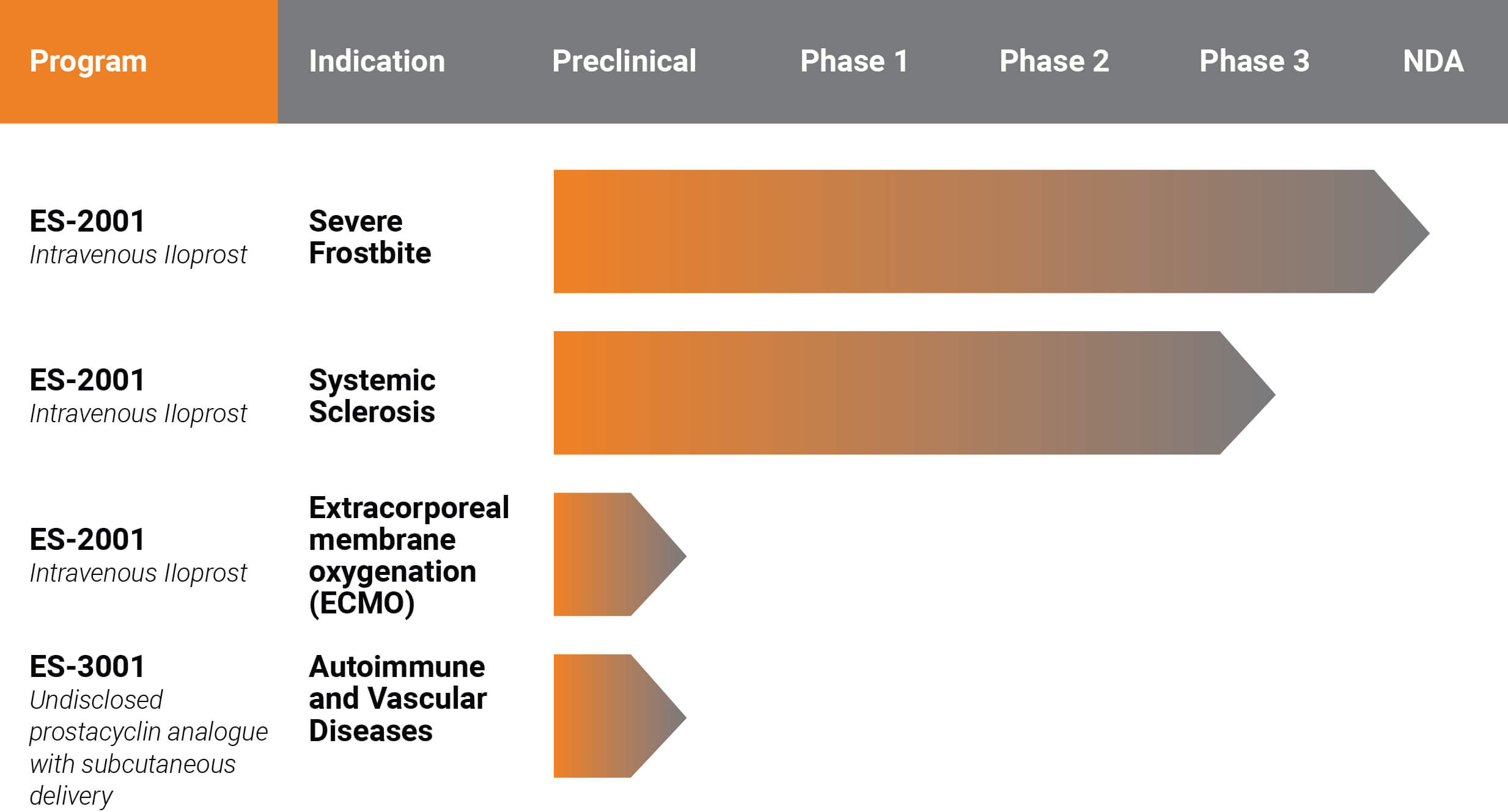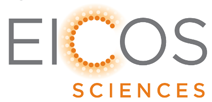Pipeline

FROSTBITE
Frostbite is a thermal injury caused when tissue is exposed to freezing temperatures long enough for ice crystals to form in the affected tissue. Frostbite is a serious condition requiring immediate medical attention but for which there are no FDA-approved treatments. Despite advancements in the standard of care for frostbite, amputation of the affected extremity is still common practice in severe cases which has a major detrimental impact on a person’s quality of life. Frostbite affects military personnel operating in cold regions, industrial workers, people experiencing homelessness, as well as people engaging in recreational activities such as skiing, hiking, mountaineering, and ice climbing.
Reference: Endorf_2021_J Burn Care Research 42_1261-65
SYSTEMIC SCLEROSIS
Systemic Sclerosis (SSc), a form of Scleroderma, is a rare autoimmune disease characterized by inflammation, immune system dysfunction, vasculopathy, and fibrosis of the skin and internal organs. SSc primarily affects women with an estimated ~75,000 adult cases in the United States. Greater than 95% of people with SSc have evidence of Raynaud’s Phenomenon which can be excruciatingly painful. This impacts quality of life and day-to-day functioning and may be the initial sign of long-term progressive complications due to inflammation and scarring of the vessels that supply blood to the digits. These slow progressive changes can cause more severe and longer lasting ischemic episodes, that can lead to digital ulcers, or sores, over the fingertips. If untreated, these superficial ulcerations can develop into deep-tissue necrosis with gangrene and ultimately result in amputation.
Reference: Steen et al. Rheumatology 2009;48:iii19–iii24. Matucci-Cerinic M, Krieg T, Guillevin, et al. Ann Rheum Dis 2016; 75:1770-1776
ECMO
Mechanical circulation in the form of ECMO, also known as extracorporeal membrane oxygenation, is used for critically ill infants, children and adults with life threatening respiratory or cardiac failure. ECMO is used to support patients as they recover from injury and reestablish the ability to maintain their own adequate respiration and circulation. ECMO can also serve as a bridge to transplant or ventricular assist device placement in pediatric patients. Mortality and morbidity for ECMO remains high despite advances in device technology, surgical techniques and medical management. Thrombotic or hemorrhagic complications account for the majority of morbidity and mortality in ECMO-treated patients and can lead to major end-organ damage.
Reference: Morell E, et al: Extracorporeal Membrane Oxygenation in Pediatric Pulmonary Hypertension. Pediatr Crit CareMed 2020; 21:256–266
